SUEZ site-seeing | Part 8 | Landor Street, Integrated resource recovery centre
21st March 2018
Posted by Dr. Adam Read.
The second site visit this year was organised at our integrated resource recovery facility at Landor Street, in the heart of industrial Birmingham. Given the post-Christmas materials uplift, it was an ideal time to see a relatively small site working to its maximum, clearing the backlog of recyclates from the West Midlands and beyond!
The site and its developments (multiple activities)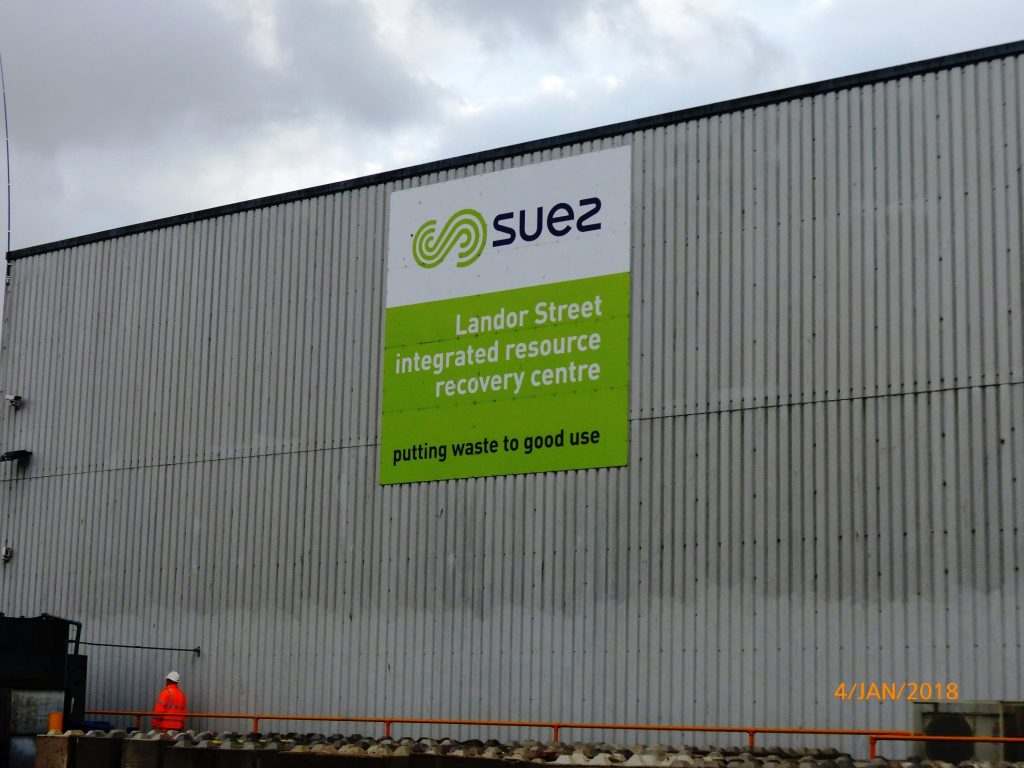
Landor Street was opened in 2012, initially as a materials recycling facility (MRF) satisfying local recycling collection and processing needs from the likes of North Warwickshire and Solihull. Originally, the site also produced solid recovered fuel (SRF) for our client CEMEX, however changes to commercial requirements and market conditions meant that the SRF production has been stopped at present. Since then, the facility has adapted to service the large industrial and commercial waste streams available in and around Birmingham. Changing market conditions have been a key factor in the evolution of the site. These are still influencing the facility today, and the activities carried out there are being adapted to suit changing end market priorities.
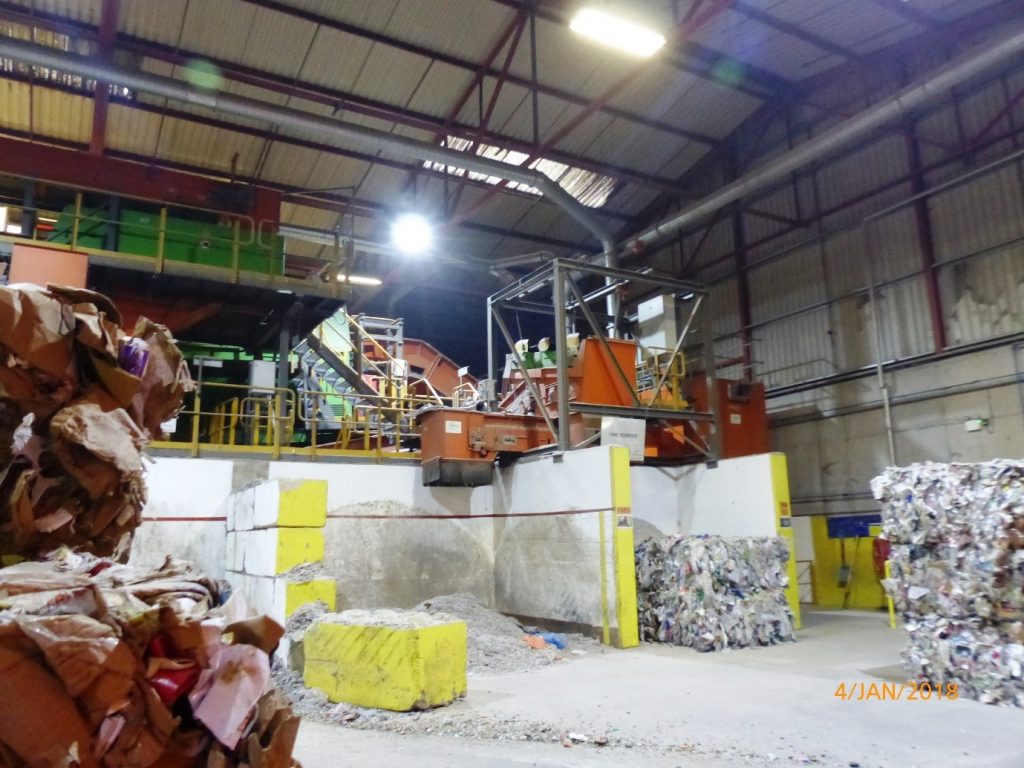
A small transfer station used for local bulking makes up part of the site. In addition to this, a glass clean-up facility where glass from the MRF, and from other sites in the SUEZ portfolio, is segregated by size to enable re-melt, (and reducing the onward costs of disposal) whilst the residues form part of an enhanced SRF fuel sent to CEMEX.
The site has also just started shredding the MRF residues and is making a SRF which forms a part of the fuel that CEMEX use as an alternative to fossil fuel. Some 30-40 tonnes of SRF per day are now leaving the site, and this is expected to increase as new international markets are secured. This is an excellent example of a commercial site, which is not underpinned by a large local authority contract, showcasing the need for the sites like this to constantly adapt to survive ever changing market and regulatory conditions.
The materials recycling facility (MRF) operation
The MRF currently works on two shifts, but will soon be switching to 24/7 operations with three shifts to enable all of the incoming materials to be handled – it can process 70,000 tonnes of mixed recyclates annually. The major constraint on the site is the size of the plot, running alongside a major road and rail line. The size of the input and output halls also restricts operations (300 tonne capacity).
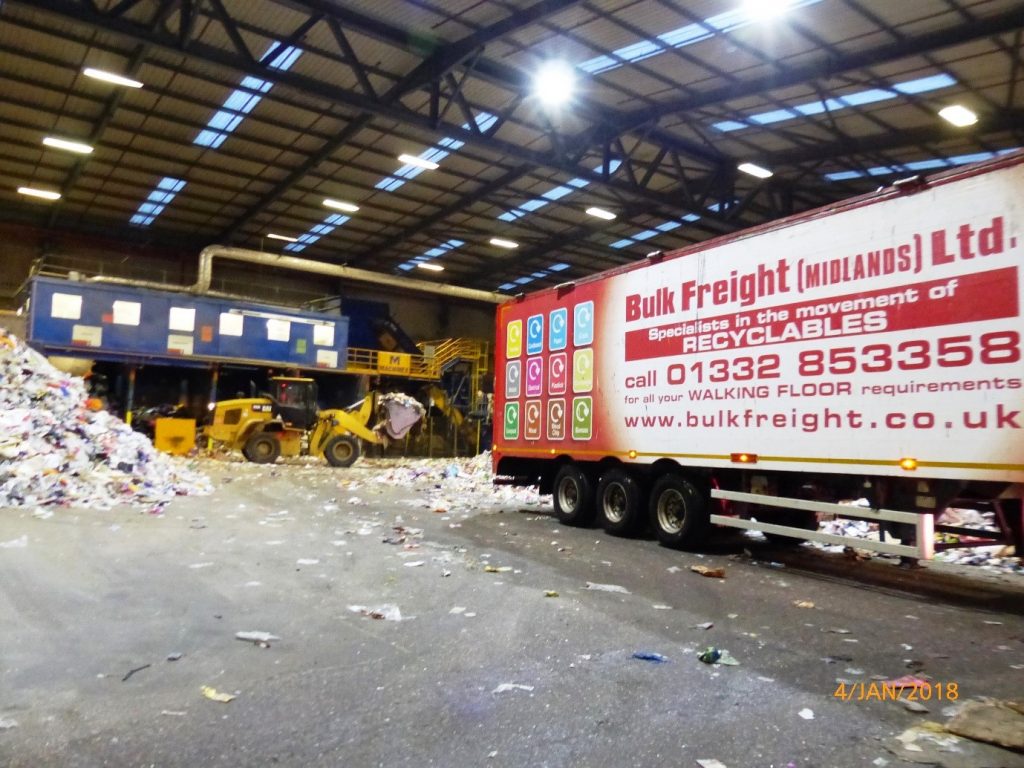
The site is clearly feeling the impact of the China National Sword issue. Switching off some international markets for paper and plastic, and making access to other markets is harder as materials swamp them, and there were many bales of good quality newspapers and plastic (PET) bottles being stored for longer than normal prior to onward movement to target markets.
In addition, to meet the higher market specifications on quality products, particularly for paper (35 per cent of all materials on site is mixed paper, newspapers and pamphlets) they have increased the number of pickers from eight to 16 (who now focus on picking target materials rather than removing non-target items). The first picking cabin focuses on oversized items (which would potentially block up the facility) and the non-target items, acting as a form of pre-screening before materials go through an array of shredders, trommels and wind-sifters.
The plant has also slowed down in recent months to cope with the increasing quality needed by the destination markets. This is a balance that all MRF operators up and down the country, will be addressing on a daily basis. The challenge was being faced head-on by all of the staff at the site who take a great deal of pride in what they do, delivering quality levels for paper and plastic beyond targets of 98 per cent. They were fully bought into why the plant configuration had changed and their critical role in managing the product quality – a great team effort!
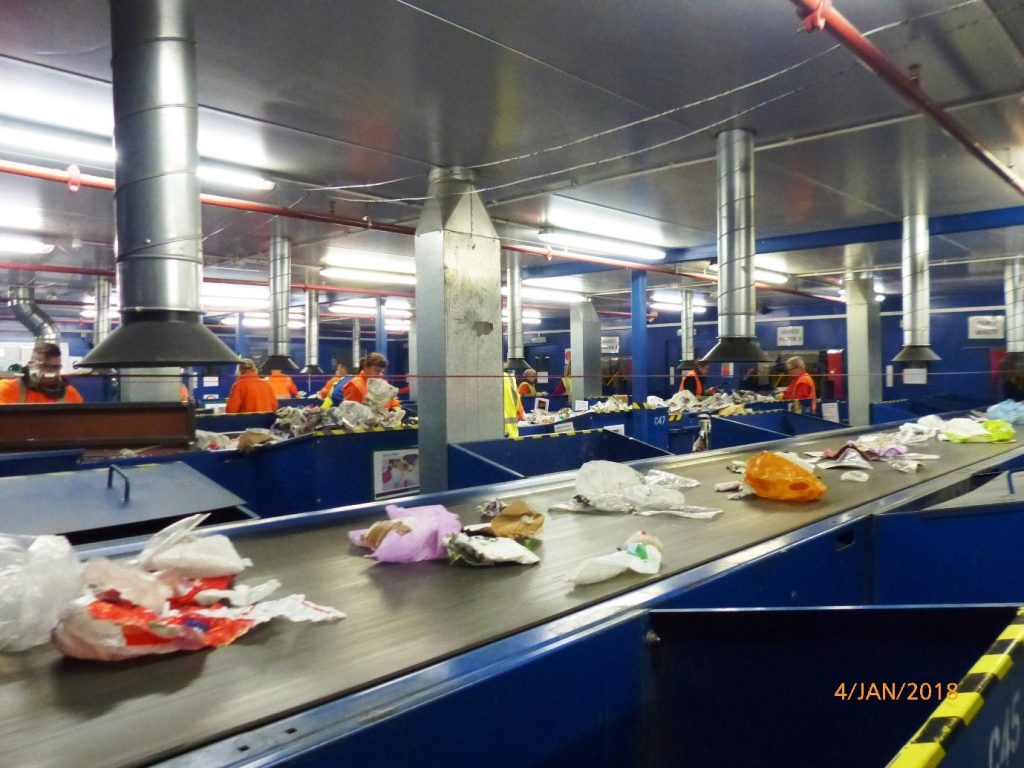
Picking belts control quality and ensure oversized items don’t make it through to the automatic parts of the site
The site has some 50 operational staff working across the different phases of the plant. And, as on other sites some of them are dedicated to sampling both input streams and output materials. The larger repeat customers providing the feedstock will have more regular checks of composition and moisture than the lower tonnage clients. A bale of each output materials is ‘broken’ each week for manual inspection, as well as more analytical sampling and hand sorting of the materials.
Quality matters!
As with other SUEZ sites the team has a mix of experiences, many bringing experience from other sectors. It is the insights they have shared from their time on production lines and in process engineering roles in the automotive and food manufacturing sectors that enable the site to deliver on its product specifications, managing to deliver contamination rates below 1.5 per cent on mixed loads. This is impressive, but when you consider the additional tonnage arriving at site in the three weeks after Christmas, it is a tremendous effort.
As with all our sites, the ‘site walk’ by the management team, whether it be daily, weekly or monthly is a key part of quality control and staff engagement. The teams utilise lean techniques like GEMBA (‘go see’ in Japanese). The management team has built a joint appreciation of what is important and the significance of every member of staff in delivering the quality processes and activities that drive the quality outputs needed in the current tough global commodity markets.
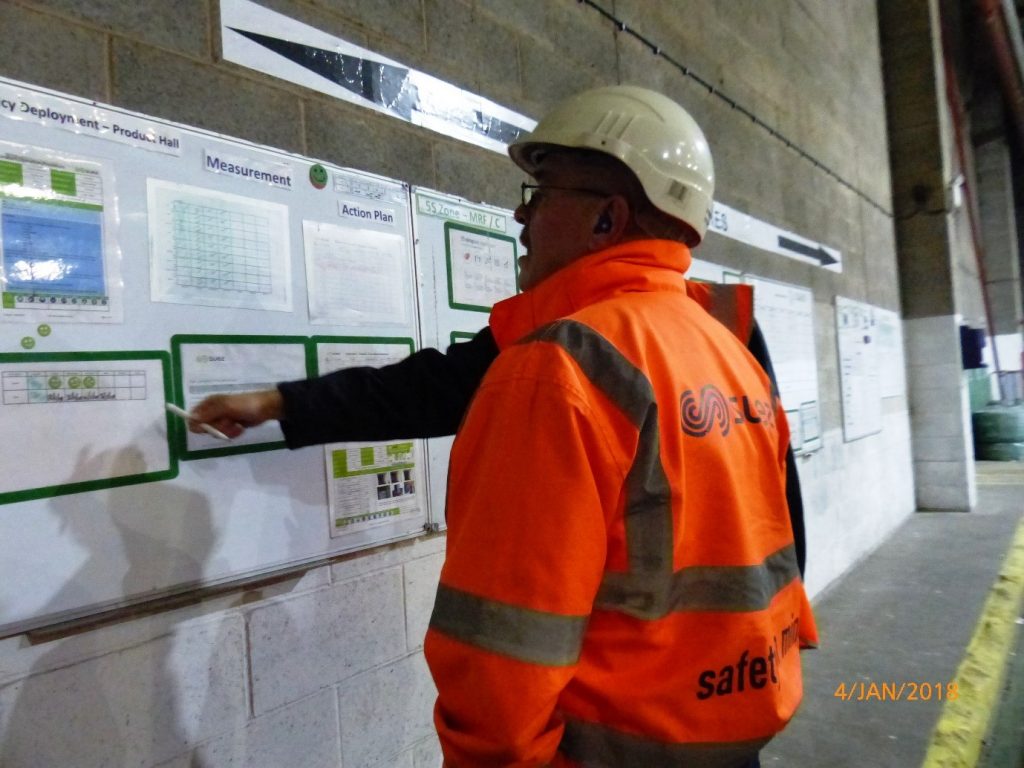
Checking the success factors at each step of the process.
Reflections – it really is all about the quality
So with another two site visits under my belt, this time both local, both commercial (not underpinned by municipal long term contracts) and both with difficult and changing market needs, it is clear that the waste sector, and the facilities that SUEZ designs, builds and operates are all about quality.
Better control over feedstock, and working with regular customers to reduce contamination and unwanted items is key, as is monitoring the different stages of the processes to identify issues early and adapting the plant to deliver the products that the market wants and needs. But, this relies on quality people, working as a team, understanding their roles and supporting one another, and the influx of new people to our sites from process industries is proving a real success.
Our site-based teams are the unsung heroes of our operations, and they make our quality systems work, building solutions from the bottom when issues arise and feeding back on operational challenges and possible innovations. Without them the recovery of value, materials and products would be an impossible task.
I look forward to seeing more of our teams in the coming months as I continue my travels, with planned visits to a number of our collection contracts, and hearing about their reflections on life at SUEZ, their time on any number of our sites, and the importance of our mission for quality in all we do.
Tweet- commercial operation
- Glass recycling
- Materials Recycling Facility
- recycling
- site tour
- site visit
- solid recovered fuel
- SRF
- study tour
